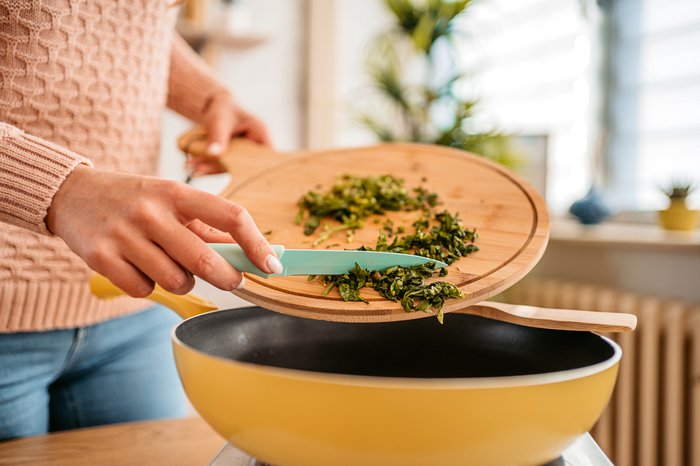If you have reduced kidney function the removal of excess fluid can become problematic. Your doctor or nurse may prescribe medication to try and increase the amount of urine you pass and they may also ask you to reduce your fluid intake.
Control your thirst by cutting down on salt
It is much easier to cope with a reduction in fluids if you are also aware of the amount of salt in your diet. Salt can make you thirsty, raise your blood pressure and can lead to fluid retention. A daily intake of 5 grams or 1 teaspoon of salt (or less) should help to control thirst.
Reading food labels can help you to identify foods that are high in salt, and allow you to compare products in order to choose the lower-salt option. In general:
- a product with more than 1.5g of salt per 100g is HIGH in salt
- a product with 0.3g of salt or less per 100g is LOW in salt.
The British Heart Foundation Taking control of food portions and labels leaflet includes a handy food labelling card you can keep in your wallet and refer to when you're food shopping.
Where possible, cooking from fresh rather than using processed foods or ‘ready meals’ will help you reduce your salt intake.
For example, a jar of shop-bought tomato pasta sauce contains 0.7g salt per 100g compared to just 0.02g per 100g of homemade sauce using tinned tomatoes, onion, garlic and herbs. A slice of ham can contain 0.5g salt compared to 0.05g of the same amount of roasted chicken.
Herbs and spices can be used to give flavour to food, but salt substitutes such as Losalt are not recommended as they are high in potassium, which is not suitable for many kidney patients.
Salt substitutes also won't help you wean yourself off salty-tasting food, but you can "retrain" your tastebuds by gradually cutting back on the amount of added salt in your diet.

Practical ways to reduce your fluid intake
People tend to drink both from thirst but also out of habit.
To help you cut down on liquids, try:
- using a tea cup rather than a mug (saving up to 100ml per drink!)
- measuring your cup volume to work out how many you can have in a day
- swallowing your tablets with food if you possibly can.
If you have a dry mouth, try sucking an ice cube, chewing gum or a sugar-free sweet, as all these can stimulate saliva production.
Even swilling your mouth with some mouthwash can help ease a thirst!
In hot weather, plastic ice cubes can cool your drink without contributing extra fluid.
Don't forget non-drink liquids
We know it’s not easy to monitor every last drop of liquid you consume but if you try to make small adjustments to your intake you WILL start to feel better, more quickly.
Remember, though, it is not just drinks which need to be considered when you are trying to reduce the amount of liquid you take in. Milk on cereal, jelly, yoghurts, gravy, soup and ice cream all have a high water content and really do need to be included.
Your personal fluid restriction can vary depending on how active you are, the temperature and the amount of urine you pass.
If you are concerned about your fluid intake, always speak to your kidney doctor, nurse or dietitian.